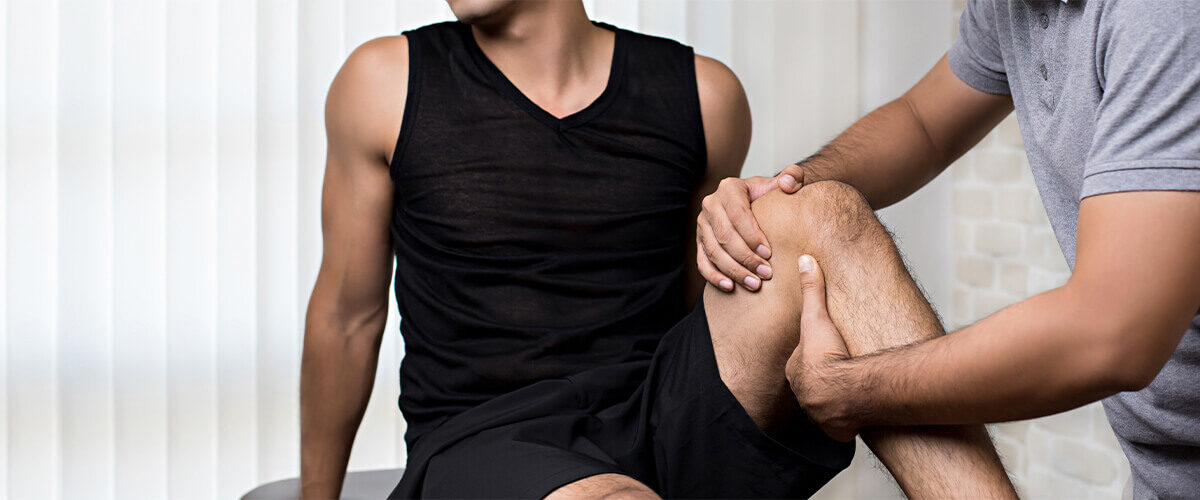Knee pain in old age is a typical problem among those over the age of 50. Pain in the Knee is not always caused by old age; it can also be caused by previous injuries, misuse, infections, or arthritis. The role of the knee joint is to bend, straighten, and carry the weight of the body. The femur, thigh bone, tibia, patella, kneecap, and fibula make up the joint. All of these bones working together provide the Knee’s stability and weight-bearing ability.
With each stride we take, our Knee absorbs a significant amount of pressure. This pressure builds up over time with frequent wear and tear, weakening the joint muscles and ligaments. The menisci, or shock absorbers, in the Knee and the articular cartilage begin to degenerate.
Knee pain is one of the most frequent bone problems, affecting millions of people each year. The second most common source of persistent pain is knee discomfort. According to the Centers for Disease Control and Prevention, severe joint pain affects 30.7 percent of persons with arthritis aged 45 to 64 and 24.3 percent of adults aged 65 and older. Knee pain is frequently linked to aging, underlying health issues, general wear and tear, lifestyle, food, work, sports trauma, and previous injuries, among other things. You can get cured with different types of treatment all around the globe and also with physical therapy, Houston, TX.
Symptoms Of Pain In The Knee During Old Age
- Swelling of the joints and surrounding areas
- When you move, you may experience stiffness or pain.
- Redness and feeling of warmth to touch
- The inability to walk properly due to an issue with straightening or bending the Knee
- Limping as a result of discomfort
- Fever due to knee infection
- Stiffness in the affected joint, inflammation, and a sensation accompanied by a cracking sound indicate osteoarthritis.
Causes Of Knee Pain For Adults
Pain in the Knee can also be caused by medical disorders such as gout, infection, and other types of arthritis.
- Injuries: If you had a slight or significant knee injury when you were younger, it could cause current knee pain. The tendons, bones, cartilage, and ligaments that make up the Knee joint are all affected by knee injuries.
- ACL Injury: The anterior cruciate ligament is one of the four ligaments that connect your shinbone to your thigh bone. ACL damage refers to a tear or injury in the ligaments. An ACL injury might cause knee discomfort if you were a basketball or soccer player when you were younger.
- Osteoarthritis: In those over the age of 50, it is the most common cause of knee discomfort. The patient was diagnosed with morning stiffness around the joint, pain over the Knee, and inflammation.
- Fractures: Fractures can occur if you fall from a great height or are involved in an accident. In difficult situations, the discomfort can last a lifetime.
- Dislocation: Knee dislocation occurs when the knee joint moves out of its normal position. Because of the dislocation, blood flow to the leg is disrupted.
Treatment Options For Knee Pain Relief
Your doctor or a physical therapist, Houston, TX, will be able to provide you with the best treatment if you can identify the source of your knee discomfort. The treatment may begin with muscular strengthening or many foot disorders that may influence the Knee. If underlying issues cause the pain, treatment may take many days to complete. If the pain and severity are intolerable, your doctor may consider surgery. Pain in the Knee can be treated in a variety of ways, including:
Medications
Oral medicines are the first step in treating minor knee pain. It is commonly used to relieve joint inflammation. If the pain doesn’t go away, you’ll need more treatment.
R.I.C.E
Rest, Ice, Compression, and Elevation are the acronyms for Rest, Ice, Compression, and Elevation. It’s a home cure for knee discomfort that’s been used for generations. The treatment can be carried out on one’s own without the assistance of others. Resting more and taking a break from everyday activities are recommended to start the healing process, followed by icing your Knee in regions where the pain is felt to reduce inflammation. The third step is to apply a compression bandage on the Knee to help with swelling and alignment. If you tie the bandage too tightly, it may cut off the blood flow to your knee. The next step is to keep your Knee elevated to allow it to rest and minimize inflammation.
Physical Therapy Sessions
It is a type of physical treatment that aims to strengthen your muscles and improve the smoothness of your knee movements. Physical therapy creates an activity regimen specifically for you to relieve your knee discomfort.
Surgery
When pain becomes unbearable, and all other options have been exhausted, the doctor may offer surgery at this critical time. Arthroscopy, meniscus repair, ACL reconstruction, patellar/quadriceps tendon repair, partial knee replacement, and total knee replacement are surgical therapies for pain in the Knee and injury.


